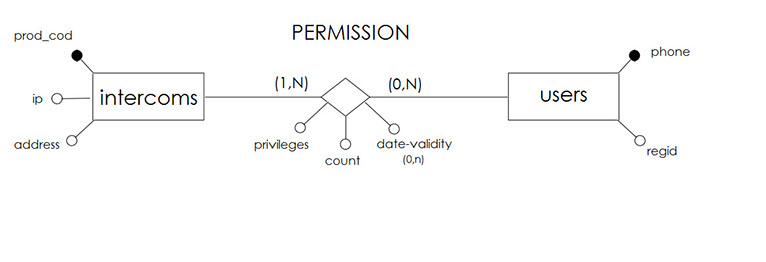System Design
Introduction
DoorOnPhone system is mainly structured in 3 parts. One of these is the DoorOnPhone mobile application used to control the intercom. The DoorOnPhone app allow user to see the person in front of the intercom or to advise the intercom to play a default audio message. The DoorOnPhone application can receive push notification in order to advise the user that there is someone is buzzing him. Then the user can send a text message that it will appear on the intercom display.
The second part of the system is the intercom. It's a device composed by a display, a button and a webcam. The display is used to show the text message sent by the mobile application. Then the button is used to buzz the intercom. The webcam is necessary to take photos and analyze them.
The third part is the server DoorOnPhone. It permit the communication between the mobile app and the intercom. The server use a database in order to collect data.
functional requirements
- receive push notification on the mobile phone with a picture of the person in front of the intercom
- send a text message that it will appear on the display of the intercom
- play a default audio message
- open the door showing the private e-key in front of the intercom
- possibility to lend the e-key for a specific period of time
- face recognition in order to advise the user if the person is a friend.
- using the service CreepShield, the system advise you if the person is similar to a sex offender
- check companies e-key in order to advise the user if the person in front of the camera is not a real maintenance man
- create a history on a private Facebook group
NON functional requirements
- The intercom needs to be always on. A possible solution is that the system has a battery in order to try to warn the user about a lack of energy. In this situation the device has not all functionalities but it works with basic functionalities.
- The owner can always enter in his home even if there is no internet connection. The system still provides access through e-keys.
system architecture
The complete structure - about the system - is drawn below. This is the hierarchical graph and it does not describe the communication process.

communication process
The graph above shows only the hierarchy. The communication process is different.
The communication between the phone and the intercom is supported by a server that can communicate with Google Cloud Message in order to send push notification on the mobile phone.
The graph below shows how the parts of the system can communicate each other:

communication from intercom to mobile phone when a person is buzzing is drawn below:

If the user want to check the camera the system does not use the GCM service in order to send information.
database
The server contains a database to give more security collecting data. The database is necessary because when the intercom try to recognize the e-key it asks to the server if the e-key is correct. The server does not collect the Key of your home.
The database contain all the links between a specific intercom and a mobile phone.
Under below you can find the ER diagram implemented in the first prototype:
